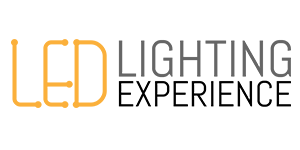LED Lighting 101
Development of LED Lighting
Over a hundred years ago, in 1907, an English engineer Henry J. Round noticed that when a 10V potential is applied to silicon carbide crystal, it emits yellowish light. Twenty years later, Oleg Vladimirovich Losev was first to further investigate the phenomenon and published a paper “Luminous carborundum detector and detection effect and oscillations with crystals“. After that, there was no real progress for almost half a century. The first light emitting diode was developed by Nick Holonyak Jr., from GE. It was about the size of a piece of pepper. His invention became the red LED that was used for indicator lights. The final part of RGB LED development that occurred in 1993, was creating blue light, resulting in the ability to produce any color of the LED light. The inventor Shuji Nakamura enabled the development of white LED lights that are now installed in commercial and manufacturing spaces all over the world. At first, LEDs were highly expensive and were only used in laboratory equipment but over time, as technology evolved, prices dropped and the application of LED lighting has widely spread.
LED Lighting Basics
LED lighting is solid state lighting (SSL) and that is the main differentiation point between LEDs and other forms of lightings such as incandescent and fluorescent. SSL means that semiconductor light-emitting diodes are the source of illumination as opposed to gas or electrical filaments found in standard lighting. LED is a p-n junction that emits light when activated. Electrons recombine with electron holes in a device and release photons once current is applied. This is called electroluminescence. Similar to incandescent lamps, LEDs achieve full brightness without warm-up and frequent turning on and off doesn’t affect their productivity. LEDs emit light in one direction and thus exclude the need for reflectors or diffusers. Another great feature of LED lights is that they produce an insignificant amount of heat. Other than that, LED sources are dimmable and can be integrated with various sensors and controls. This enables additional power savings because they can operate depending on occupancy of a room and with use of daylight saving.
LED Bulbs
After years of development, LED companies have finally introduced a replacement for wide-spread 60 watt light bulb in 2009. Traditional incandescent bulbs measure brightness in watts, meaning you had to buy a bulb with higher wattage in order to get more light. LED bulbs measure brightness in lumens which is a more precise measure. The difference in energy consumption is radical. For example, LED equivalent of a 60-watt bulb consumes between 9 and 12 watts while providing the same brightness and a 40-watt equivalent LED bulb consumes only 6 to 8.5 watts. That is roughly 5 times less energy needed for the same effect. Furthermore, LED bulbs have an almost unlimited lifespan and they will continue to light up even after the estimated lifespan expires but the brightness may drop. They sometimes have lifetime expectation up to 100,000 hours of operation, meaning, if you leave your LED bulb on for 8 hours a day, twenty years will pass before you have to replace it. One of the important features of LED lighting is that they’re eco-friendly. LEDs don’t contain toxic materials and they’re recyclable.
Compared to standard light bulbs, LEDs:
- Emit more lumens,
- Do not emit UV lights,
- Are more durable,
- Have a longer lifespan,
- Are smaller in size,
- Consume less energy,
- Do not contain Mercury or any other toxic gases.
LED Products
As we already know, there are many LED products and the number continues to grow. Continuous improvement of LED lighting products leads to lower prices and wider adaptation of the technology. Most common LEDs include:
- Industrial and commercial lighting – found in parking lots, garage lighting, street lights, outdoor lighting, refrigerator lighting, etc.
- Kitchen lighting – used under cabinets for lighting kitchen countertops,
- Recessed lighting – commonly used in households and offices,
- Replacement lights – for replacing old incandescent light bulbs,
- Holiday lights – much cheaper and easier to use than standard holiday fixtures.
